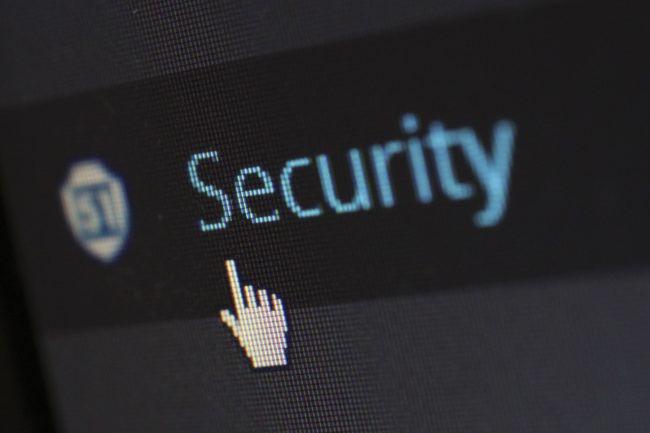The differences between spam vs. phishing can be confusing for some. Spam refers to unsolicited and often irrelevant messages sent in bulk, typically for advertising purposes. Phishing, on the other hand, is a deceptive tactic in which attackers pose as trustworthy entities to steal your personal information, such as passwords or credit card numbers.
Understanding the differences between spam and phishing is crucial because while spam is generally more of a nuisance, phishing poses a significant security risk. By recognizing the unique characteristics of each, you can better protect yourself from potential threats and keep your information safe.
What Is Spam?
Spam involves unsolicited and irrelevant messages sent in bulk, often for advertising. In 2023, the U.S. set a staggering record by sending 8 billion spam emails in a single day. You encounter various types of spam, such as email spam, social media spam and spam in website comments.
Common examples include advertisements for dubious products, fake promotions and unwanted newsletters. Recognizing these types of spam can help you avoid clutter in your inbox and reduce your risk of falling for potential scams.
What Is Phishing?
Phishing is a deceptive tactic where cybercriminals pose as trustworthy entities to trick you into revealing personal information, such as passwords or credit card numbers. In 2021, phishing was the most effective cyberthreat, responsible for 90% of data breaches worldwide. You might encounter various types of phishing attacks, including:
- Email phishing: You receive a fake email from a legitimate source.
- Spear phishing: It targets specific individuals or organizations.
- Smishing: Phishing attempts are made via SMS texts.
Examples of phishing content include emails claiming to be from your bank asking you to verify your account details or urgent messages from a supposed colleague requesting sensitive information. Recognizing these tactics can help you stay vigilant and protect your personal information.
Critical Differences Between Spam vs. Phishing
The purpose and intent behind spam and phishing differ significantly. Spam is often indiscriminately sent to large groups to promote products or services. It aims to drive traffic, sales or awareness, usually without malicious intent beyond annoyance.
Phishing, however, has a more sinister goal. It seeks to deceive you into providing sensitive information — such as login credentials, financial details or personal data — for fraud. The attackers intend to exploit this information for monetary gain, identity theft or unauthorized access to accounts.
The techniques individuals use in spam and phishing also vary. Spammers often use automated systems to send mass emails, relying on sheer volume to generate responses. Phishing attackers, however, employ more sophisticated methods. They craft convincing emails, messages or websites that mimic legitimate sources, which aim to trick you into trusting them.
The potential consequences for phishing victims are severe. If you fall for a phishing scam, you risk financial loss, unauthorized transactions, identity theft and compromised accounts. Understanding these differences helps you stay alert and take appropriate precautions to protect yourself.
Identifying Spam
Spam emails often have common characteristics that can help you identify them. These emails typically come from unknown senders and may have generic greetings like “Dear User” instead of your name.
Spam emails often contain poor grammar and spelling mistakes, and the content is usually irrelevant or unsolicited, promoting products, services or dubious efforts. Additionally, they frequently include suspicious links or attachments, which can be harmful if clicked or downloaded.
In social media and other platforms, spotting spam involves looking for excessive and repetitive messages, advertisements and links. Spammers flood these platforms with the same content over and over, often in comments, direct messages or posts.
To help identify and filter spam, you can use tools and features like spam filters in your email service, report spam options on social media and security software that flags suspicious activity. Staying vigilant and using these tools can keep your online experience safer and more enjoyable.
Identify Phishing
Phishing emails often have several red flags that you can look out for to protect yourself. These emails might use urgent or threatening language, such as “immediate action required” or “your account will be suspended.” They often come from email addresses that look similar to legitimate ones but have slight variations or misspellings.
Another red flag is when these emails contain links that lead to unfamiliar or suspicious websites. Additionally, phishing emails might ask you to provide personal information — such as passwords or credit card details — which reputable organizations would never request via email.
You can use a few techniques to verify the legitimacy of communications. First, check the sender’s email address carefully for any discrepancies. If you have doubts, visit the official website of the organization directly by typing the URL into your browser rather than clicking on any links in the email.
You can also contact the organization using a phone number or email address you know is legitimate to confirm whether the communication is genuine. These methods ensure you’re not falling victim to phishing attempts and keep your personal information secure.
Preventing Spam Attacks
To reduce spam, follow some best practices that help keep your inbox clean and secure. In 2021, over 323,000 people worldwide were tricked by phishing, highlighting the importance of vigilance. Avoid sharing your email address publicly and consider using a disposable email address for sign-ups. Use strong, unique passwords and change them regularly to prevent your email from being compromised.
To block spam, utilize tools and technologies like email filters, spam-blocking software and built-in spam detection features from most email providers. If you receive suspicious emails, mark them as spam or junk to help improve the filter’s accuracy, avoid clicking on any links and delete the message immediately. These steps can reduce the spam you encounter and protect you from potential threats.
Preventing Phishing Attacks
Always be cautious with unsolicited emails and messages to avoid phishing scams, especially those asking for personal information or urgent actions. Verify the sender’s address and look for any signs of deception, such as slight variations in email addresses. Use tools and technologies like anti-phishing software, browser warnings and security features that flag suspicious websites and emails.
If you suspect a phishing scam, don’t interact with links or download attachments. Instead, report the email to your provider, contact the organization directly through a verified method and delete the message. These practices will help protect your personal information and keep you safe from phishing threats.
Stay Vigilant and Proactive
Understanding the nuances in spam vs. phishing attacks can be crucial to combating these threats. Likewise, staying vigilant and taking proactive measures are essential to protect yourself from spam and phishing attacks. Staying informed about the latest threats and educating others can help create a safer online environment.
Recent Stories
Follow Us On
Get the latest tech stories and news in seconds!
Sign up for our newsletter below to receive updates about technology trends




